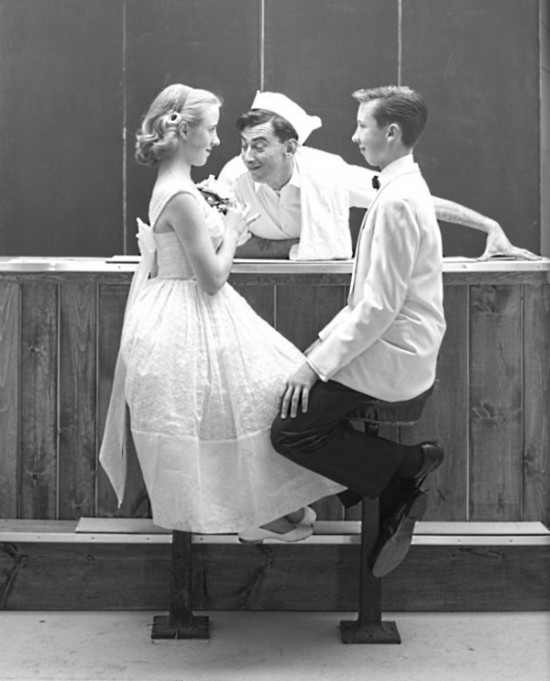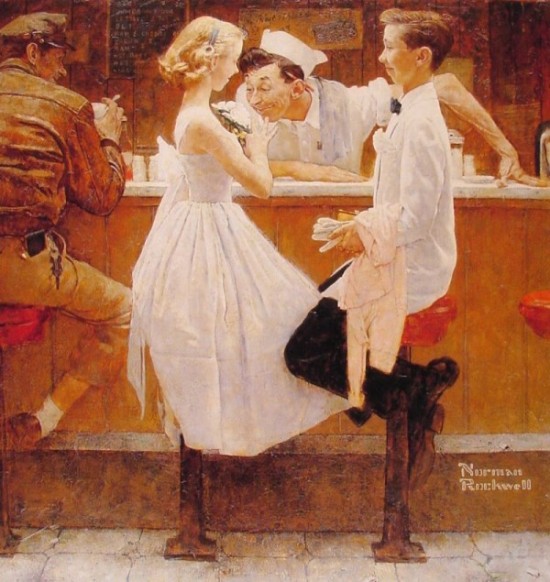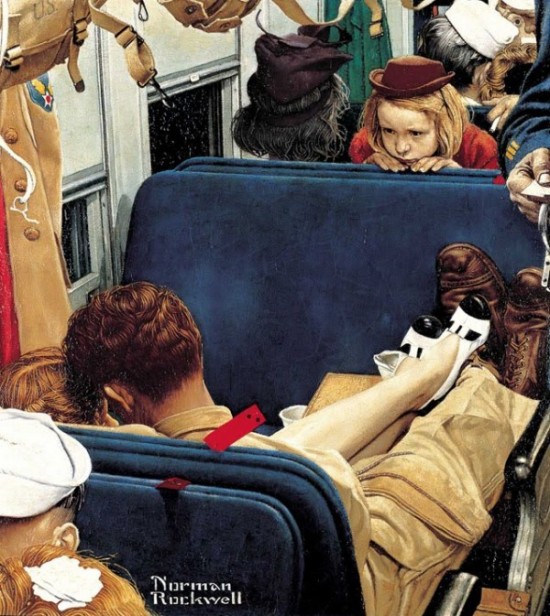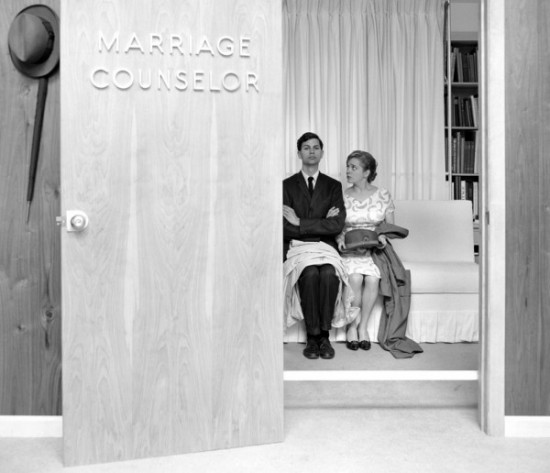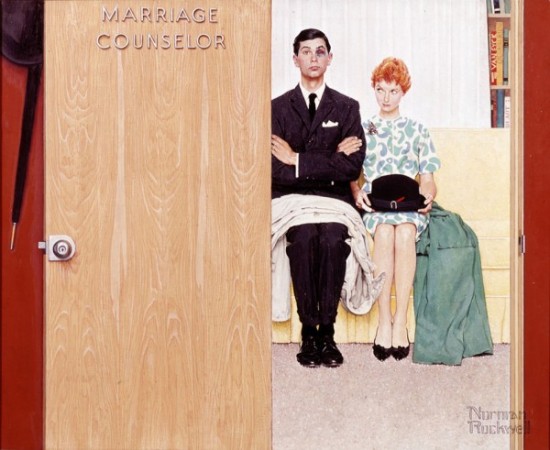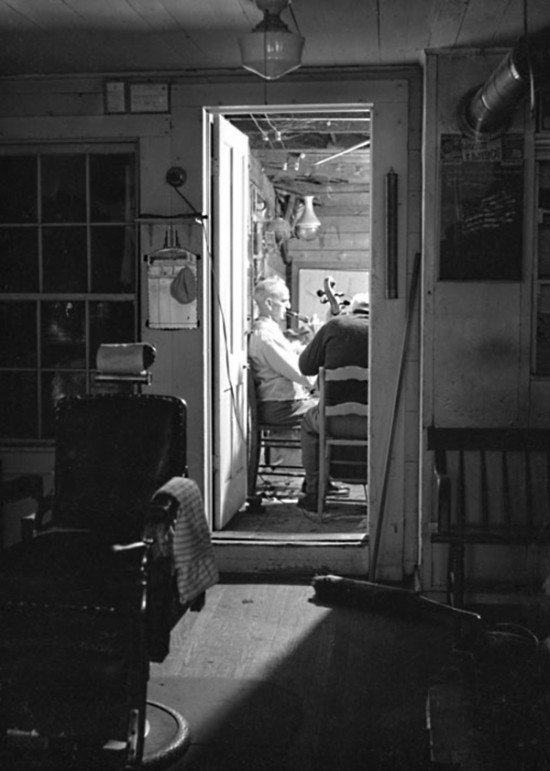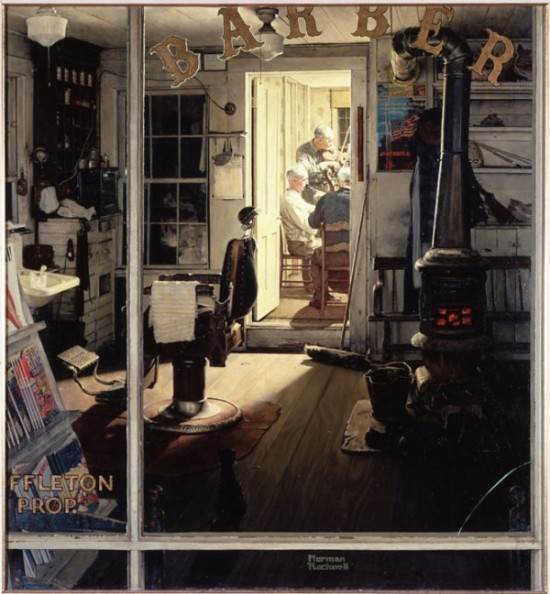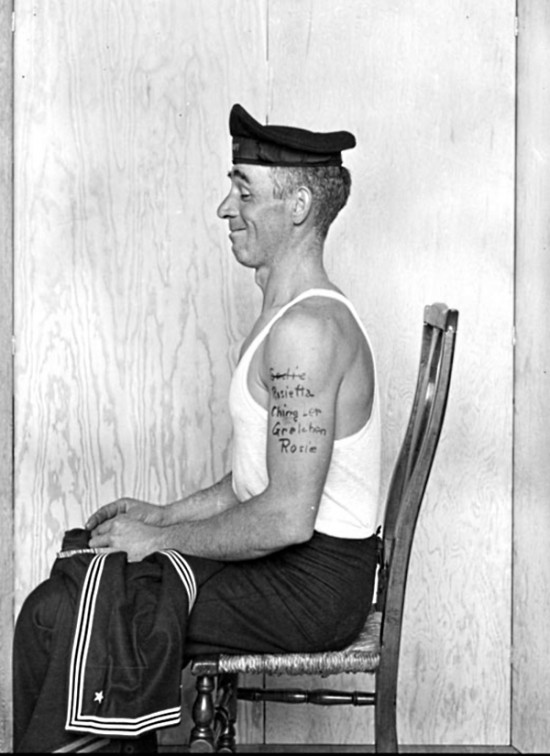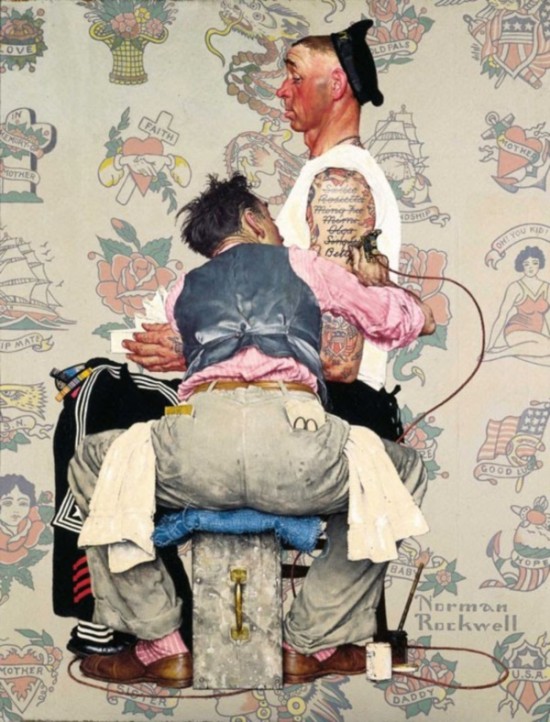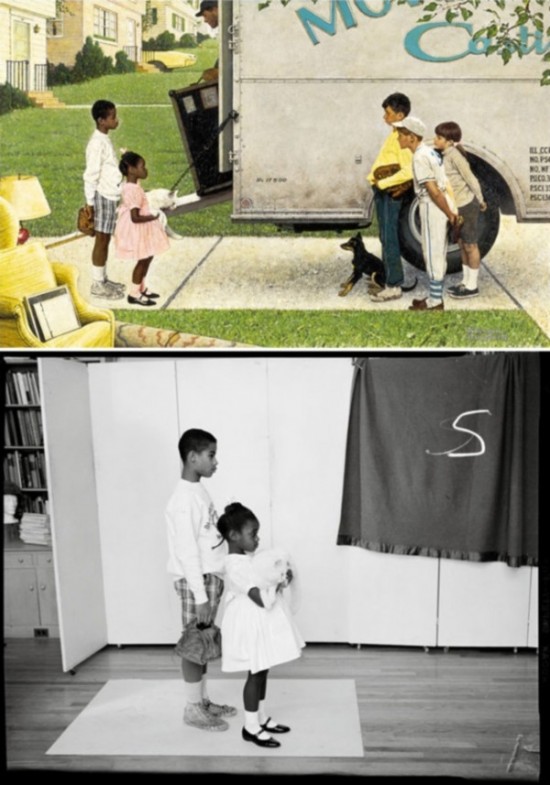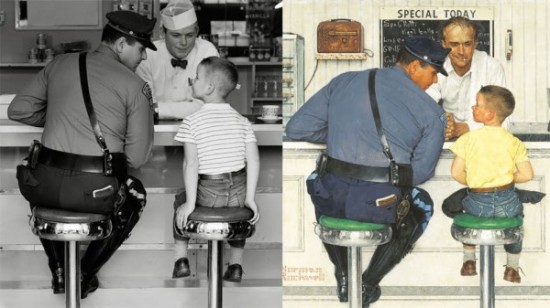Some art comes from a second of inspiration, some comes from meticulous planning, like Scar would say. Norman Rockwell’s paintings came from the latter, piecing together a desired scene from a photograph to serve as the basis for his painting.
The American painter is mostly known for the Willie Gillis series, Rosie the Riveter, Saying Grace (1951), The Problem We All Live With, and the Four Freedoms series. He was born on February 3, 1894, in New York City and died 84 years later in Stockbridge, Massachusetts.
For his works and what was described as vivid and affectionate portraits of our country, Rockwell received the Presidential Medal of Freedom, the United States of America’s highest civilian honor, in 1977.
Rockwell prefereed working in these photos with regular folk: Friends and family instead of professional models, allowing him to capture ordinary faces and natural capacity. From eye-line to body language, every element was deliberately staged and tells a story.
He would then work from the prints to create the paintings, achieving his famous flesh and blood realism through the photographs, snapping more than 20,000 images over four decades.

